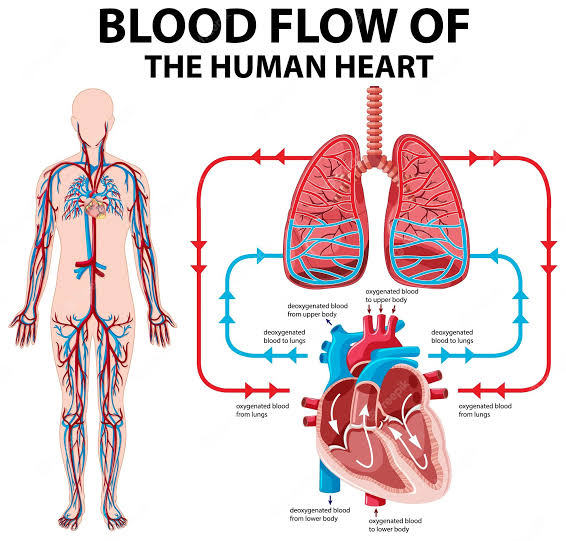
How does blood flow in the body
The blood moves in the body in a specific way, which does not change, and in the following is the way blood flows through the body:
Veins serve to bring blood to the right side of the heart.
Then the pulmonary arteries carry blood to the lungs, so that it receives oxygen.
The pulmonary veins carry oxygen-rich blood to the left side of the heart.
The aorta, which is the main artery in the body, carries blood from the left side of the heart to the rest of the body through many branches of the arteries.
Capillaries have thin walls that allow oxygen, nutrients, carbon dioxide, and waste products to pass into and out of tissue cells.
The veins then carry the blood back to the heart, and the process begins again.
vascular function
The function of the blood vessels is to deliver blood to the organs and tissues in the body, and the blood provides them with the oxygen and nutrients they need for work, and the blood vessels also transport waste and carbon dioxide away from the organs and tissues of the body, and it is worth noting that each type of vessel The blood vessels perform a different function, and the following is an explanation of it:
Arteries: They are strong and muscular blood vessels, and they carry oxygen-rich blood from the heart to the body, and they deal with a large amount of force and pressure as a result of blood flow, but they do not carry a large amount of blood, as only about 10% to 15% of The body’s blood is in the arteries.
Capillaries: They are tiny blood vessels that have thin walls. Oxygen and nutrients in the blood can travel through the walls to reach the organs and tissues. They also work to get rid of waste in the tissues. It is worth noting that the capillaries are the place where exchange takes place. Oxygen and nutrients to carbon dioxide and waste.
Veins: unlike arteries, veins do not have to carry high pressure blood, but they must carry large amounts of deoxygenated blood to the heart, and the thinner, less flexible walls help to deal with large volumes and low pressure, and most veins include Valves that open and close, which control the process of blood flow and maintain the flow in one direction, as approximately 75% of the blood is in the veins.






